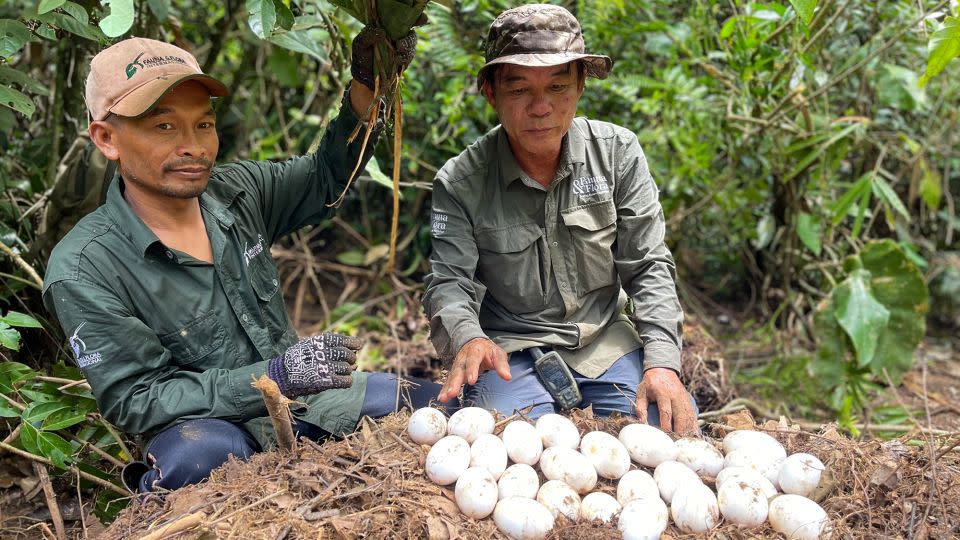Crocodiles that were nearly extinct make a comeback in Cambodia
Editor’s Note: Call to Earth is a CNN editorial series committed to reporting on the environmental challenges facing our planet, together with the solutions. Rolex’s Perpetual Planet Initiative has partnered with CNN to drive awareness and education around key sustainability issues and to inspire positive action.
Hopes have been raised for the future of a critically endangered species of crocodile after 60 eggs hatched in the wild – the largest recorded breeding event for the species this century.
The Siamese crocodiles successfully hatched in five different nests in the Cardamom National Park in Cambodia, according to a statement from nature conservation charity Fauna & Flora Thursday.
Siamese crocodiles are a freshwater species that can grow up to 4 meters (13.1 feet) in length. They have a prominent bony crest at the back of the head, and were once present in much of mainland Southeast Asia.
However, hunting and large-scale farming, which impacted its wetland habitat, drove the species to the brink of extinction.
The species is now categorized as critically endangered and is on the International Union for Conservation of Nature’s (IUCN) Red List of Threatened Species. Previous estimates have put its wild population around 400, according to the statement.

Siamese crocodiles were rediscovered in the wild in 2000, and since then Fauna & Flora has been working with Cambodian government officials and other local partners on a targeted conservation breeding program.
As part of these efforts, Siamese crocodiles are bred in captivity and then released into the wild, with 196 crocodiles successfully released since 2012.
Then, in May 2024, local people found three nests in an area where captive-bred crocodiles hadn’t been released, and two more were found in a different area shortly after.
This suggests that long-term protection efforts are helping populations to start increasing again, said Flora & Fauna.
At the end of June, 60 baby crocodiles emerged from the nests, which the charity said is “an incredible result for conservationists and a real sign of hope for the future of this species.”
Pablo Sinovas, country director of the Fauna & Flora Cambodia program, said the organization and its partners had been “steadfast” in their commitment to boosting populations.
“This involves not only breeding them in captivity but also ensuring they have a suitable habitat to be released into,” he said in the statement.
“Strengthening protection of key sites within Cardamom National Park is crucial, shielding these habitats from threats such as deforestation and poaching.”
Sinovas added that the discovery of wild nests underlines the importance of protecting this area.
“With only a few hundred individuals estimated in the wild, the hatching of 60 new crocodiles is a tremendous boost,” he said.
“At a time when wetland biodiversity is declining rapidly across the region, it underscores the potential for natural recovery through sustained collaborative conservation efforts.”
Toy Chorn, a community warden who was involved in finding and protecting the nests, has high hopes for the species.
“This discovery indicates that our conservation efforts have paid off, and I believe that with our ongoing conservation efforts, the population of Siamese crocodiles will continue to increase in the future,” said Chorn.
For more CNN news and newsletters create an account at CNN.com

